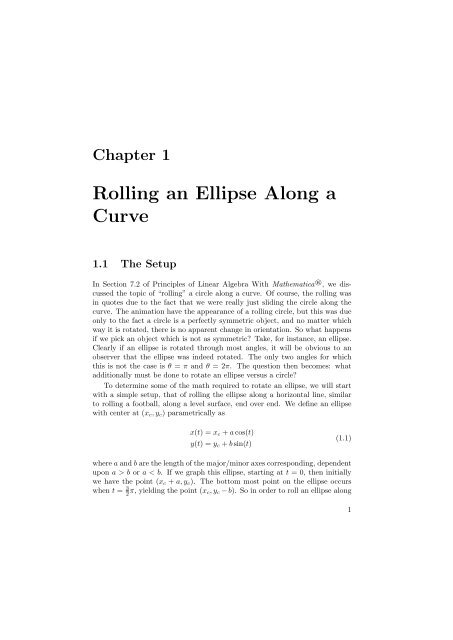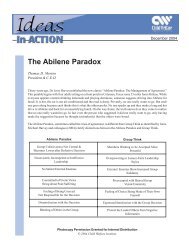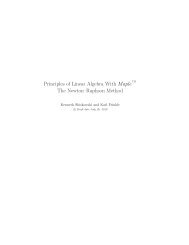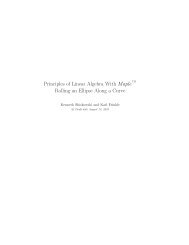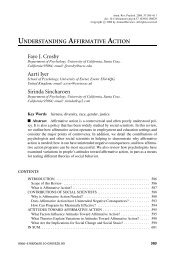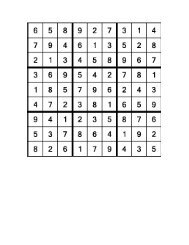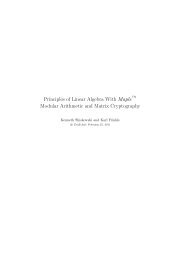Principles of Linear Algebra With Mathematica® Rolling an Ellipse ...
Principles of Linear Algebra With Mathematica® Rolling an Ellipse ...
Principles of Linear Algebra With Mathematica® Rolling an Ellipse ...
Create successful ePaper yourself
Turn your PDF publications into a flip-book with our unique Google optimized e-Paper software.
Chapter 1<strong>Rolling</strong> <strong>an</strong> <strong>Ellipse</strong> Along aCurve1.1 The SetupIn Section 7.2 <strong>of</strong> <strong>Principles</strong> <strong>of</strong> <strong>Linear</strong> <strong>Algebra</strong> <strong>With</strong> Mathematica ® , we discussedthe topic <strong>of</strong> “rolling” a circle along a curve. Of course, the rolling wasin quotes due to the fact that we were really just sliding the circle along thecurve. The <strong>an</strong>imation have the appear<strong>an</strong>ce <strong>of</strong> a rolling circle, but this was dueonly to the fact a circle is a perfectly symmetric object, <strong>an</strong>d no matter whichway it is rotated, there is no apparent ch<strong>an</strong>ge in orientation. So what happensif we pick <strong>an</strong> object which is not as symmetric? Take, for inst<strong>an</strong>ce, <strong>an</strong> ellipse.Clearly if <strong>an</strong> ellipse is rotated through most <strong>an</strong>gles, it will be obvious to <strong>an</strong>observer that the ellipse was indeed rotated. The only two <strong>an</strong>gles for whichthis is not the case is θ = π <strong>an</strong>d θ = 2π. The question then becomes: whatadditionally must be done to rotate <strong>an</strong> ellipse versus a circle?To determine some <strong>of</strong> the math required to rotate <strong>an</strong> ellipse, we will startwith a simple setup, that <strong>of</strong> rolling the ellipse along a horizontal line, similarto rolling a football, along a level surface, end over end. We define <strong>an</strong> ellipsewith center at (x c , y c ) parametrically asx(t) = x c + a cos(t)y(t) = y c + b sin(t)(1.1)where a <strong>an</strong>d b are the length <strong>of</strong> the major/minor axes corresponding, dependentupon a > b or a < b. If we graph this ellipse, starting at t = 0, then initiallywe have the point (x c + a, y c ). The bottom most point on the ellipse occurswhen t = 3 2 π, yielding the point (x c, y c − b). So in order to roll <strong>an</strong> ellipse along1


